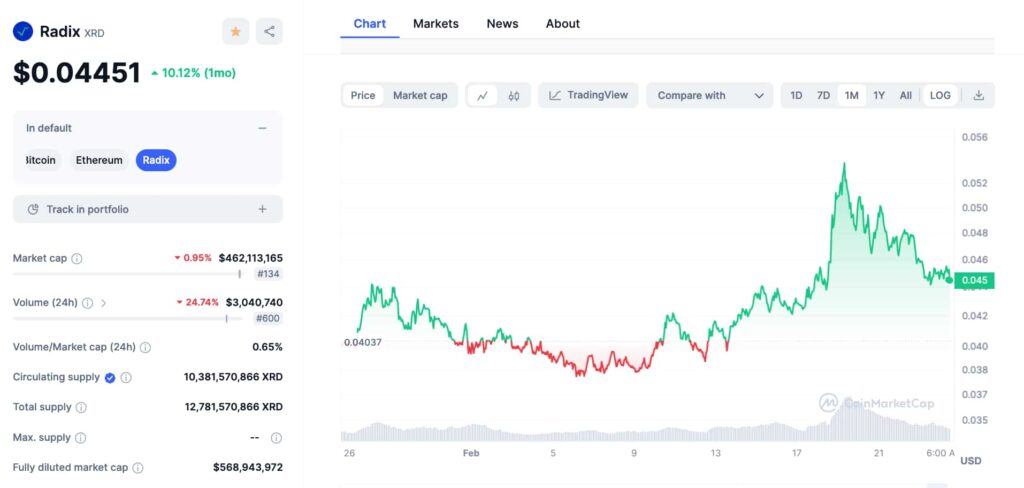Solana (SOL) and Avalanche (AVAX) were among the best performers in 2021 and 2023, offering a more scalable solution to Ethereum (ETH). The capital value of both ecosystems has grown from a few million to billions of dollars, rewarding cryptocurrency investors who seized the opportunity.
Now, with the development of technology, new investment opportunities are emerging in the cryptocurrency scene through improved techniques with low capital.
In particular, Radix (XRD) is emerging as a promising contender among top-tier cryptocurrencies looking into decentralized finance (DeFi) and Web3 solutions. Radix is part of a group of chains that use sharding to scale their capacity while maintaining decentralization and security.
Other “sharded” chains are MultiversX (EGLD), Near (NEAR), Sui Network (SUI), and Toncoin (TON), to name a few. Notably, XRD currently has the lowest market cap among these competitors, with less than $1 billion in market capitalization.
Radix (XRD) fundamental analysis
From a fundamental analysis perspective, Radix is a cryptocurrency worth $462 million, trading at $0.044. The DeFi-focused project has 10.38 billion XRD in circulation out of a total supply of 12.78 billion. This makes XRD a low-inflation token, around 2.5% per year, and is issued through a proof-of-stake mechanism with local delegation.

In the past, we have seen memecoins like PEPE cross the $1 billion market cap area in just a few days. Radix is likely to be positioned at a discount considering its problem-solving capabilities at less than half that value.
In this regard, Radix is thriving as one of the most innovative technology groups in DeFi. Its asset-oriented model prevents wallet-draining hacks, which are common in projects similar to or compatible with the Ethereum Virtual Machine (EVM).
Furthermore, Radix's development language, Scrypto, and its consensus algorithm, Cerberus, ensure ease of setup for developers, as well as atomic composability of the hashed transactions processed by the network.
Radix Technical Analysis (XRD).
Meanwhile, the weekly chart suggests that XRD represents an interesting investment opportunity in the cryptocurrency space for traders who missed SOL, AVAX and others.
This is due to the recent breakout of the yearly downtrend, which coincides with the breakout from the 20-week Exponential Moving Average (EMA). Interestingly, Radix rose from $0.05 to over $0.15 per token the last time this happened.
Price action reversing this past activity would put XRD at $0.1 per token for a gain of approximately 125%. Additionally, this would see Radix cross the $1 billion capitalization mark. However, it is still less than 10 times as much as Solana and Avalanche while resolving related issues from both networks.

It is worth noting that both SOL and AVAX experienced significant network outages in 2024.
In conclusion, Radix could be a promising cryptocurrency opportunity for investors interested in decentralized finance. It has a growing ecosystem with decentralized exchanges, lending protocols, staking, and even a popular memecoin called HUG.
However, XRD is a low-cap cryptocurrency with low liquidity, which exposes investors to risks. Therefore, caution is crucial when investing and speculating in these pilot projects.
Disclaimer: The content on this website should not be considered as investment advice. Investing is speculation. When you invest, your capital is at risk.

